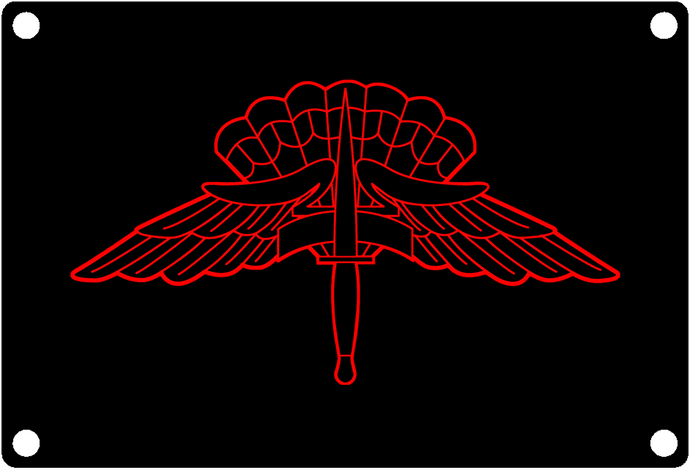


The soldier must fill a position commensurate with his or her rank or grade during the problem. In addition, two mass tactical jumps which culminate in an airborne assault problem with either a unit equivalent to a battalion or larger a separate company battery or an organic staff of regimental size or larger. Two night jumps must also be made during the hours of darkness (regardless of time of day with respect to sunset) one of which will be as jumpmaster of a stick. In cases of simulated combat the equipment will include water, rations (actual or dummy), ammunition (actual or dummy), and other essential items necessary to sustain an individual in combat. Participated in a minimum of 30 jumps including fifteen jumps with combat equipment to consist of normal TOE equipment including individual weapon carried in combat whether the jump was in actual or simulated combat.To be eligible for the Senior Parachutist Badge, an individual must have been rated excellent in character and efficiency and have met the following requirements:
#Us army freefall badge full
By the end of the course, a student will have completed five jumps in varying jump configurations, from a "no load" jump all the way to a full combat load jump at night. To graduate, a student must complete the three-phase course consisting of a ground phase, a tower phase, and a jump phase. To be eligible for award of the Parachutist Badge, an individual must have completed the Basic Airborne Course of the Airborne School of the United States Army Infantry School at Fort Benning, Georgia. The Senior and Master Parachutist Badges were authorized in 1949. The airborne background trimming that is worn behind the badge of those assigned to airborne units is also a contribution of Yarborough. LTG Yarborough also designed the Senior and Master Parachutist Badges and the addition of stars to portray the number of combat jumps.
#Us army freefall badge Patch
The Parachutist Badge replaced the "Parachutist Patch" which had previously been worn as a large patch on the side of a paratrooper's garrison cap. Yarborough and approved by the Department of War in March of that year. The original Army Parachutist Badge was designed in 1941 by Captain (later Lieutenant General) William P. The badge and its sew-on equivalent may be worn on the Army Combat Uniform (ACU). It signifies that the soldier is a trained military parachutist, and is qualified to participate in airborne operations. The Army's Parachutist Badge is awarded to all military personnel of any service who complete the US Army Basic Airborne Course at Fort Benning, Georgia. The majority of the services earn their Military Parachutist Badge through the U.S. Marine Corps issue the Navy and Marine Corps Parachutist Badge to advanced parachutists. Air Force issue the same Senior and Master Parachutist Badges while the U.S. The DoD military services are all awarded the same Military Parachutist Badge. The United States Space Force and United States Coast Guard are the only branches that do not award the Parachutist Badge, but their members are authorized to receive the Parachutist Badges of other services in accordance with their prescribed requirements. The Parachutist Badge, also commonly referred to as "Jump Wings" is a military badge of the United States Armed Forces.


 0 kommentar(er)
0 kommentar(er)
